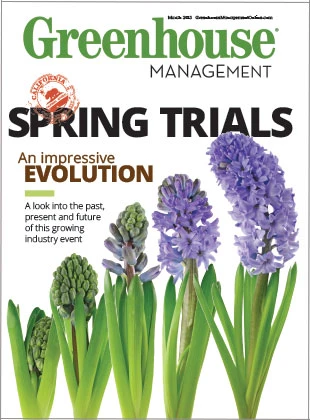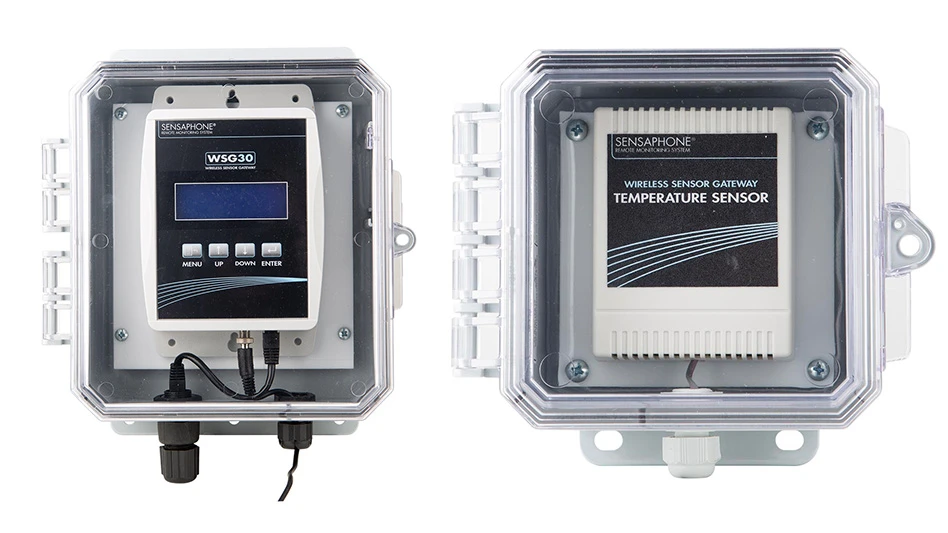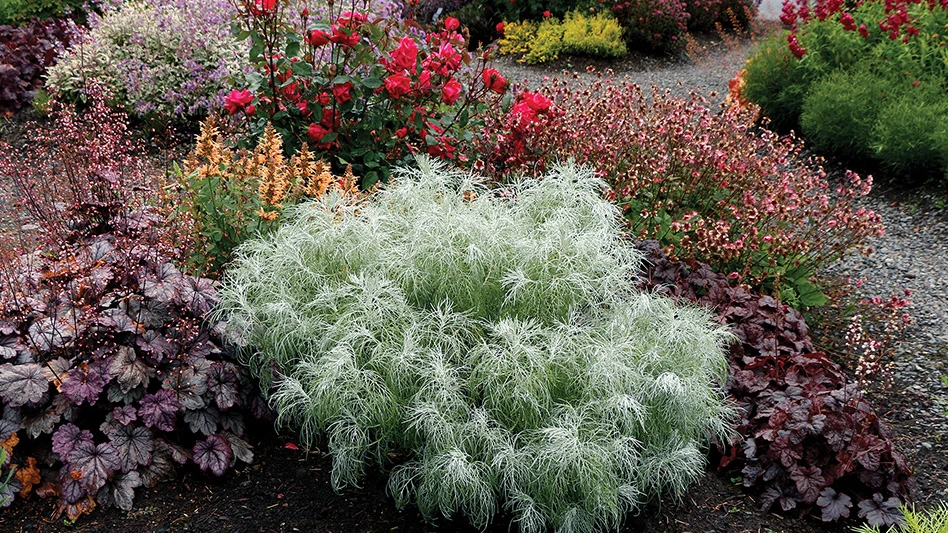 Many ornamental plants can be attacked by both fungi (like Alternaria, Cercospora and Colletotrichu) and bacteria (including Pseudomonas and Xanthomonas) that cause leaf spots or blights. Telling them apart can be a real challenge because the symptoms are similar, but knowing what most likely is on your crop is the first step to figuring out how to keep it safe. Xanthomonas leaf spots are often more common in the summer due to the increased overhead irrigation or rainfall and higher temperatures. Pseudomonas spp. can be a problem year-round whenever leaves are wet.
Many ornamental plants can be attacked by both fungi (like Alternaria, Cercospora and Colletotrichu) and bacteria (including Pseudomonas and Xanthomonas) that cause leaf spots or blights. Telling them apart can be a real challenge because the symptoms are similar, but knowing what most likely is on your crop is the first step to figuring out how to keep it safe. Xanthomonas leaf spots are often more common in the summer due to the increased overhead irrigation or rainfall and higher temperatures. Pseudomonas spp. can be a problem year-round whenever leaves are wet.
One of the most common bacterial leaf spots in the landscape is caused by Pseudomonas cichorii on garden mums, which tends to be a problem in the fall as the plants fill in and leaves stay wet for long periods. Overhead irrigation and crowding can lead to an outbreak of bacterial leaf spot on almost any crop, however, at any time of the year.
Is this a bacterial leaf spot?
The first step to control any disease is to gather background information. What diseases occur on your crop? When do those diseases occur? What cultural controls are effective? If the problem is new to you, samples must be sent to a diagnostic laboratory for culturing or indexing. This is the only reliable way to determine the cause of the problem. When a bacterium is isolated from a plant, do not jump to the conclusion that it is causing the disease. Few diagnostic labs have the ability to test bacteria for pathogenicity. Check your records, the literature, and extension personnel or other disease experts to make sure that the bacterium the lab identified has been demonstrated to cause disease on the plant you are growing. Unfortunately, many bacteria can be found on and in ornamental plants, but not all are proven to cause disease (see Table 1).
 Steps for prevention
Steps for prevention
It’s critical to understand the most effective steps to prevent bacterial leaf spots since curing them is never as good as you would hope. Use pathogen-free cuttings, plugs and seeds whenever possible. Several prominent diseases caused by Xanthomonas and Pseudomonas can be seed-borne (Ranunculus, Zinnia, Matthiola). If you start with infected seeds, plugs or cuttings, you are behind the curve immediately, and getting ahead will be very costly.
Eliminate overhead irrigation and exposure to rainfall when possible. Splashing water moves bacteria and allows them to infect new leaves. Irrigate when the leaves will dry quickly to slow down their spread. If all you do is eliminate wet leaves, you will completely stop disease spread and often stop its appearance in the first place.
Scout crops as they are received (especially cuttings and plug flats) and once a week afterward. Remove plants with symptoms as soon as they are found. Keeping them around makes contamination of new crops possible. If you insist on keeping infected plants, at least put them into quarantine to stop spread into healthy crops.
Have problems diagnosed by a laboratory, and keep good records of problems and what you did to control them. It’s nearly impossible to tell if a leaf spot is caused by a bacterium or a fungus without a lab diagnosis. However, some of the key symptoms of bacterial leaf spots include the following:
- Spots form between leaf veins
- Water-soaked appearance is common
- Centers of spots may fall out
- Brightly colored margins are rare (more common with fungal spots)
- Spots often start on leaf edges
- No fruiting bodies are present (these are for fungi only)
- Concentric rings rarely form, except with Erwinia soft rot on leaves
The last resort
Even if you have done everything possible with cultural controls, you may still find use of a bactericide necessary. Many bactericides have been tested over the past 30 years on a wide variety of pathogens and plants. Bacteria can rapidly develop resistance to many active ingredients (especially copper and antibiotics), and rotating between different mode-of-action groups is crucial. Even after 30 plus years, very few bactericides are available, and the majority of them contain copper. Streptomycin sulfate is also used in some parts of the United States, especially for prevention of fire blight or Erwinia soft rot.
Copper-containing products including Camelot O, Kocide, Nordox and Phyton 27 (or Phyton 35) have been consistently effective in most trials. Work at the University of Florida Mid-Florida Research and Education Center by Dr. David Norman has indicated very good control of Xanthomonas leaf spot on geranium with coppers (Kocide 3000, Camelot, Cuprofix and Phyton 27) and mancozebs (Protect DF).
A more recent product that has shown benefits in controlling bacterial leaf spots is Cease (originally sold as Rhapsody), which is a biological control (Bacillus subtilis).
Trials with Cease shown good efficacy against Pseudomonas and Xanthomonas leaf spots on bedding plants and cut flowers. The most effective rate has been 1 percent preventively or 1.5 percent to 2 percent if symptoms are present.
In the past few years, we have also found a product called KleenGrow to be very effective for leaf spots (Pseudomonas and Xanthomonas) and soft rot (Erwinia) in many trials.
 This quaternary ammonium bactericide is as effective in many trials as copper.
This quaternary ammonium bactericide is as effective in many trials as copper.
Use cultural controls to make sure your bactericide dollars are effective.
Alternating between your favorite copper product and Cease or Kleengrow has been a good way to control leaf spots caused by bacteria. As always, follow the labels — they are the law.
Ann R. Chase is a well-known plant pathologist and expert on diseases of ornamental plants throughout the United States. She is a widely published author, teacher and speaker.

Explore the March 2013 Issue
Check out more from this issue and find your next story to read.
Latest from Greenhouse Management
- Meet the All-America Selections AAS winners for 2025
- AmericanHort accepting applications for HortScholars program at Cultivate'25
- BioWorks hires Curt Granger as business development manager for specialty agriculture
- 2025 Farwest Show booth applications now open
- Bug budget boom
- Don’t overlook the label
- Hurricane Helene: Florida agricultural production losses top $40M, UF economists estimate
- No shelter!





